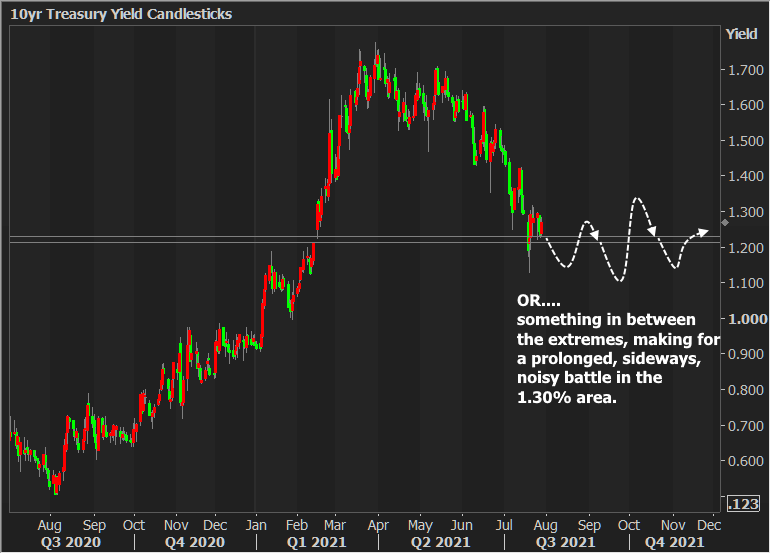With the Fed having confirmed their expected stance (closer to tapering, tolerant of short-term inflation, and plenty of pandemic-related uncertainty remaining), we move on to an inter-meeting period that will offer several opportunities to interpret the data that may inform the September Fed meeting. Today's GDP probably doesn't deserve to be on that list. Absent a huge departure from forecast, we expect month-end trading, earnings, and technicals to drive any intraday volatility. We're waiting on next week's jobs report for a meatier contribution to the Fed guessing game.
At current levels, bonds are well-positioned to play any part in the upcoming drama. 10yr yields of 1.3%-ish have been the lower bound of the trading range for the past decade (before covid). By operating in that territory currently, bonds the very embodiment of the question of whether the economy's case of covid is improving, deteriorating, or still uncertain.
This wasn't necessarily destined to be the case. If we were not seeing a surge in cases, lower vaccine efficacy, the delta variant, the persistent inability of the labor market to go where econo-bulls think it should go, or a Fed that seems hesitant to remove accommodation too quickly, rates would be back near 2021's highs and probably trending higher. Instead, all of the above amounted to a cry of "not so fast!" and the justifiable indecision from the spring has resolved with a move back down to a big picture pivot point. The opening gap from February's yield spike acceleration has done its best to bookmark the move so far.

Current levels may prove to be a pit stop if things get worse for covid stats and the economy. It's hard to say exactly where the next defensive stand would occur in that case, but the 0.9 to 1.00% zone is one of the more popular possibilities. If the other team wins, we already have good evidence for the 1.60-1.70% zone serving as an ideal meeting place for bond bears.

Finally, if the forces of good and evil remain more or less in balance, current territory could be ground zero for a new intermission-one that's ultimately resolved later this year or early next year by a combination of the right econ data, covid stats, and Fed policy changes.






